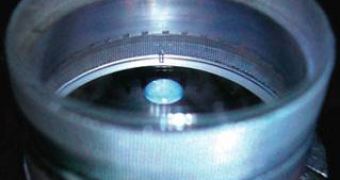Could you imagine Eskimos facing tornadoes in their frozen North? Maybe not, but in the lab tiny igloos can generate "micro-tornadoes", allowing the researchers to investigate the deadly secrets of real tornadoes and perhaps help predict them.
The translucent igloos, made of tiny water droplets and plastic balls, have diameters of millimeters. While the crystalline igloos slowly evaporate on Petri dishes, in not less than eight days, they trigger micro-tornadoes under their roofs just about half the width of a human hair.
Natural tornadoes are essentially caused by a combination of warmth and humid air rising from the ground into the colder atmosphere, turning heat into mechanical power, which can become violent, determining the world's most powerful winds. The micro-tornadoes emerge under conditions which are similar to those that cause real tornadoes. While evaporating, the igloos expel vapors that pool on the floor.
But while igloos' icy domes turn the air close to the roofs colder and the rising vapor encounters this cooler air, micro-tornadoes emerge.
The basic factors that trigger actual tornadoes are known, but there are many types of tornadoes and the precise factors that determine them are still mysterious. By mimicking real tornadoes in the igloos scientists could find out how factors like terrain condition influence tornado development.
"Knowledge of the relative importance of these factors and of their precise interplay implies the potential to better predict tornadoes," said researcher Andrei Sommer, a senior scientist at the University of Ulm in Germany.
Worldwide, tornadoes and hurricanes are just intensifying in either number or violence. Understanding how they emerge "might help to identify one common element that is responsible for a possible intensification of both events," Sommer told LiveScience.
"It is tempting to say the apparent intensification is from global warming. However, my feeling is that it might also be something else. Maybe fine dust in the air or urban air pollution is making clouds live longer, allowing for both tornadoes and hurricanes." he added.

 14 DAY TRIAL //
14 DAY TRIAL //